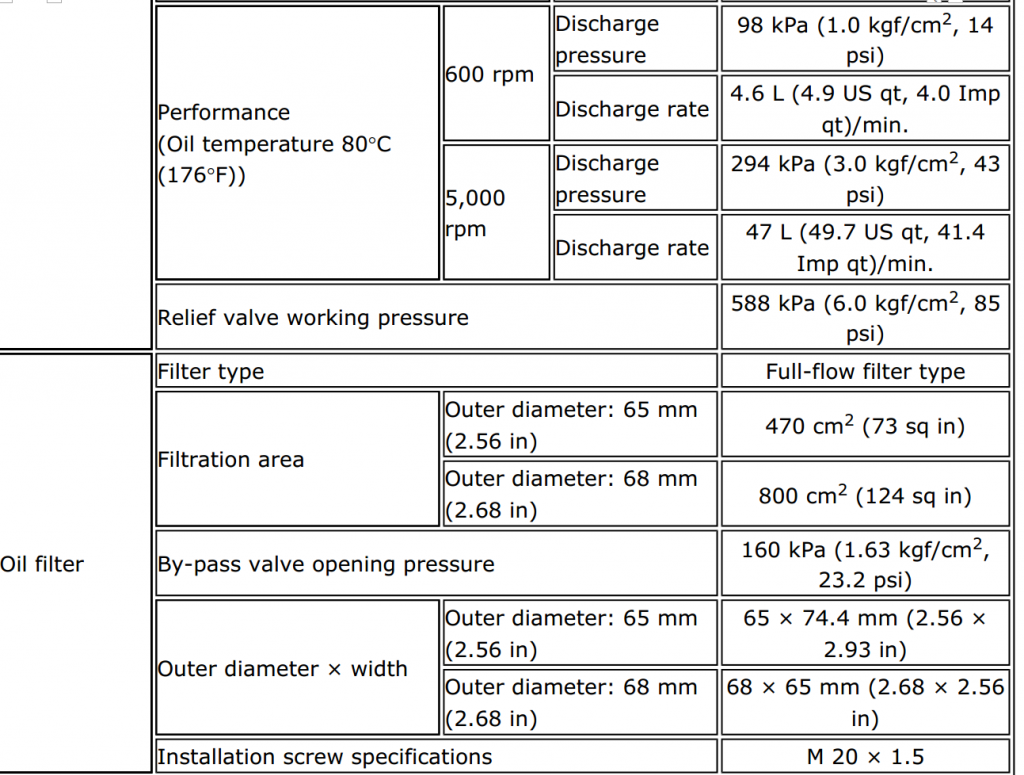Originally Posted By: gpshumway
My apologies if you think I'm being condescending, I'm basing my assessment on your third most recent post in this thread:
Originally Posted By: ZeeOSix
The unknown about these oil pump flow specs ... is that with no restriction of the engine on the pump's outlet, or is that the actual flow going through the engine's oiling system? If it's just the output of the oil pump without the restriction of the oiling system, then the actual flow through the engine could be less.
From this post it sounded to me like you thought placing a restriction on the outlet of the pump would have a substantial impact on flow. I also read your second most recent post a little too quickly and that mis-read reinforced my impression.
Let me clarify on what I meant. The flow rate through the engine certainly could be less than the pump could put out if the pump was in pressure relief. There wasn't much detail given about this Subaru oil pump spec when I made that comment, specifically if this was a pure pump performance parameter or if it was the actual flow performance of the engine's entire oiling system. The flow through the engine's oiling system certainly could be much less than the pump can put out if the pump's pressure relief valve comes into play when feeding the engine vs the pump just puking the flow output with zero resistance on the outlet.
Now that I see the snap-shot out of the service manual, it's obvious that these parameters describe the actual flow going through the engine's oiling circuit.
Here's a few comments about the specs shown in the FSM.
1) Oil is at 176 deg F. It will probably run around 200~210 deg F in normal use on the road unless this engine has some crazy oil cooler on it. That means when the oil is hotter and less viscous, the oil pressure numbers will be a little less at the engine RPMs shown in the FSM.
2) The oil pressure only changes 29 PSI over a 4,400 RPM range (600 to 5,000 RPM points). The oil volume changes 11.2 GPM over that same RPM range. This means this oiling system is very free flowing.
GM LSx family of engines typically change 10 PSI in oil pressure for every 1000 RPM increase in engine speed with 5W-30 Mobil 1 at 200~210 deg F - I have verified this on my LS6. This Subaru engine only changes 6.6 PSI for every 1000 RPM. With the oil at 200~210 deg F, the change will be even a little less.
3) The FSM shows that the PD pressure relief is set to 80 PSI. That means (based on comments made in 2 above) that the engine would have to rev (80 PSI - 43 PSI)/6.6 PSI per 1000 RPM = 5,600 more revs before the oil pressure hits 80 PSI. So, based on this it seems unlikely that the oil pump would ever hit pressure relief even with 176 deg F oil (and especially with hotter oil) unless the engine hits 10,600 RPM, and I doubt the red line is set there.





